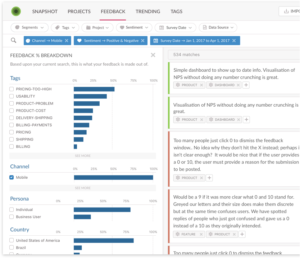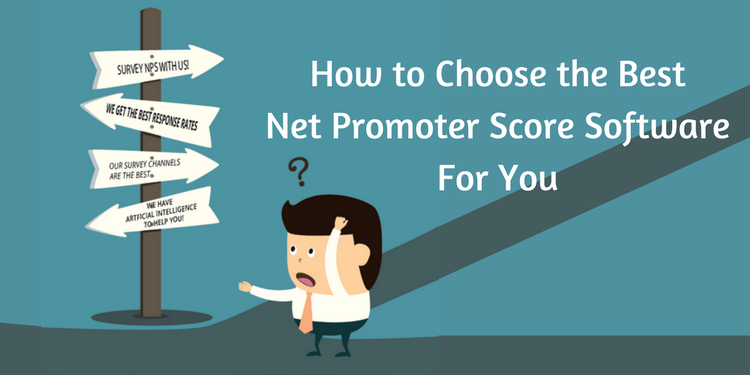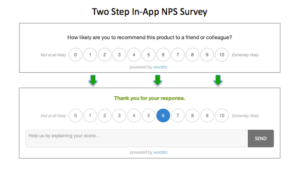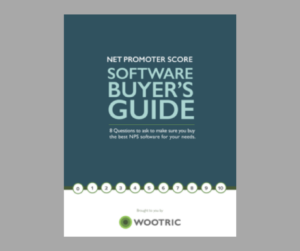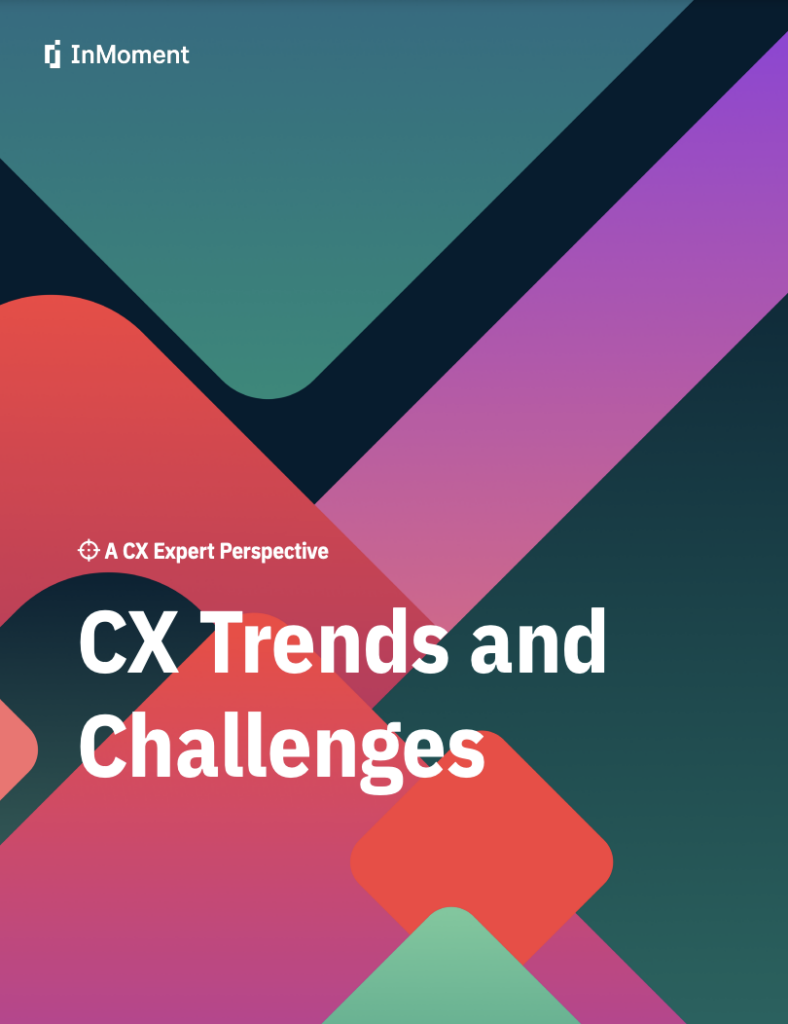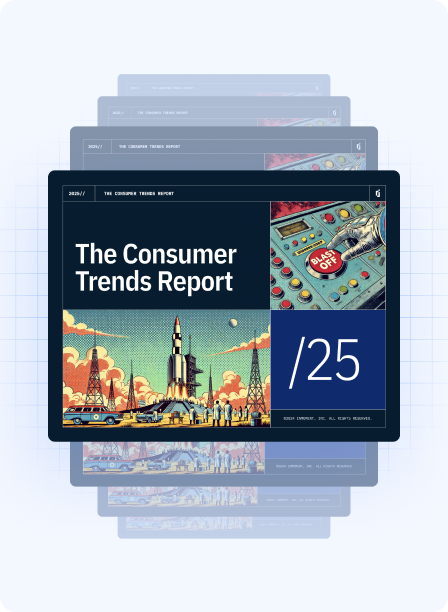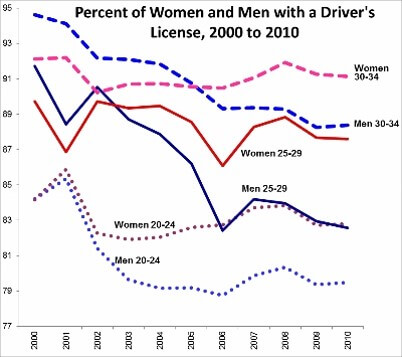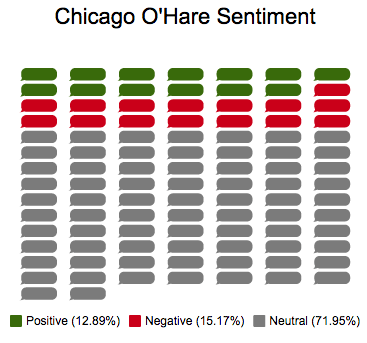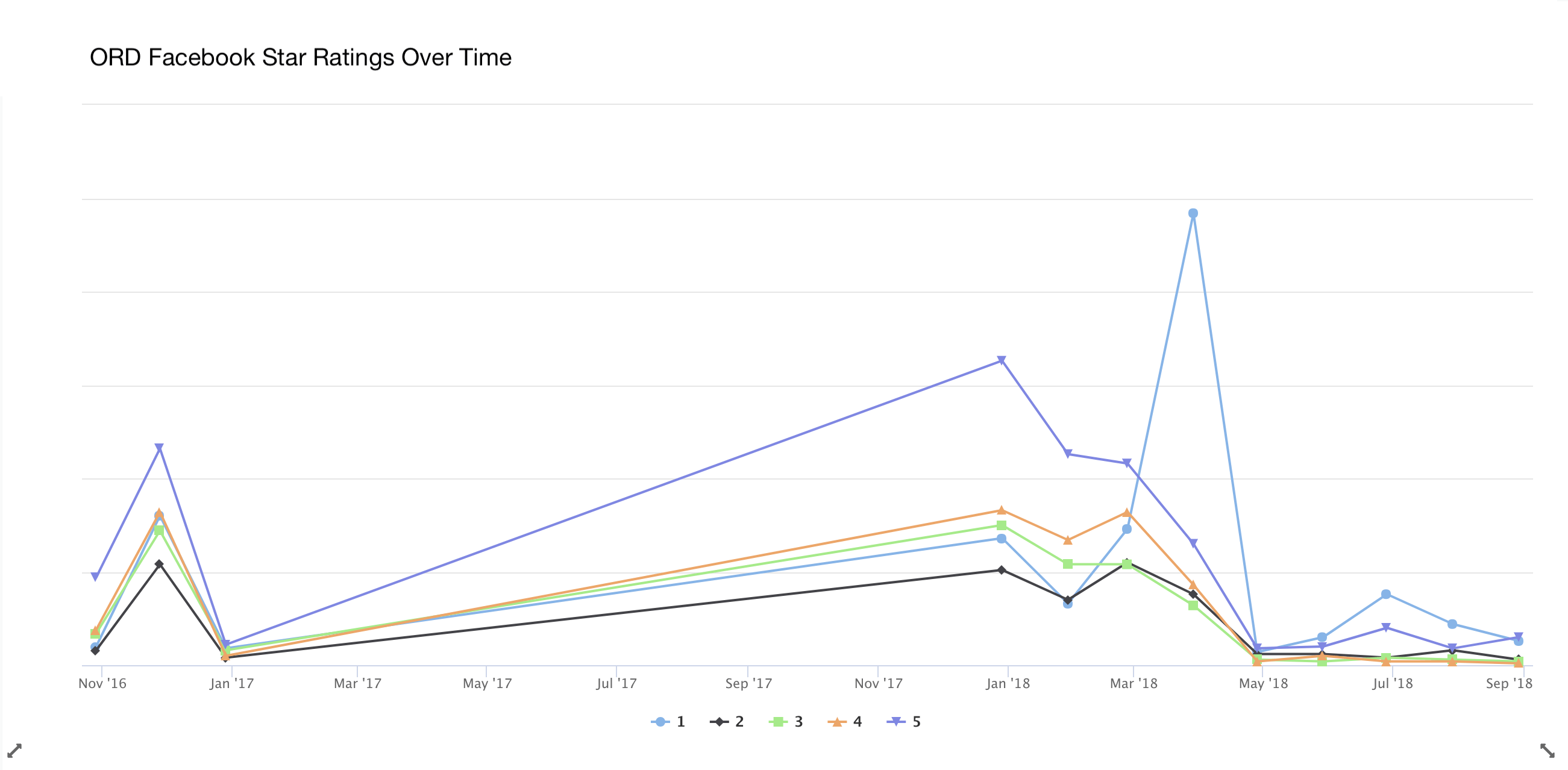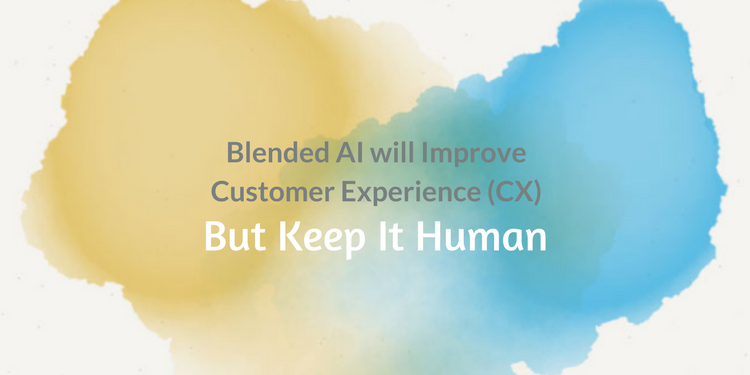
“We believe that in 2018, the use of blended AI will help improve sales outcomes and reduce customer servicing costs. But, there are implications.” – Forrester
When it comes to delivering prompt, effective service to customers, human customer support agents have their limitations. For example, for all but the biggest multinational companies, customer service isn’t available 24/7. And even during regular working hours, the supply of sales people, customer success managers and support agents is finite, causing wait times, call abandonment, and dissatisfaction (in other words: bad customer experience).
Artificial Intelligence-powered technology is even more limited – even though it’s available 24/7, even the swiftest systems can’t handle anything more than simple or common inquiries (yet). And when was the last time you called customer service with a simple problem? Too many situations are unique. Try to have your problem solved by an algorithm, and even worse CX ensues.
But do you see what I see?
I see two puzzle pieces coming together. Two halves of a potential whole. Two wrongs making a right.
What if we blend them together?
Blended AI, but which path to take?
Forrester qualifies their prediction that blended AI is in our near future by also speculating that it will result in dropping customer satisfaction levels, “as companies drive more traffic to chatbots, self-service, and chat that are not fully optimized to engage customers effectively.”
Essentially, if you use AI/chatbots to replace human interaction, your customers won’t appreciate it.
But, if you use AI/chatbots to facilitate human interaction… well, that’s another story altogether.
There tends to be two camps of thought when it comes to AI interactions with customers and it boils down to whether or not you want your customers to know they are interacting with a bot.
Avoiding Smoke & Mirrors in CX
Lisa Abbott, VP of Marketing at Wootric, believes in transparency in CX and particularly in customer interactions.
“I value brands that I can trust. If I find out your sales development rep is really a bot, I feel foolish for having wished “her” a good day. And, I have to wonder what else you are comfortable hiding from me. It is no way to begin an authentic customer relationship.”
It is important to remember that the customer’s priority is achieving their goals efficiently. If AI can help you get them there faster, customers will be delighted. However, passing a email sender or chatbot off as “Amanda” does nothing to meet customer needs and can risk alienating them if the bot gets caught.
The good news is that there is no need for a charade.
Intercom’s Operator bot was designed knowing that consumers are tired of chatbots that “try to answer questions they shouldn’t and pretend to be human which leads to bad customer experiences.”
Another good example of transparency is Drift’s chatbot — their bot’s language is breezy and human, but it is clear that sales leads are interacting with a bot. It’s fun to interact with their bot, rather than falling into the “uncanny valley” of creepy by trying to pass a bot off as human. Think Wall-E rather than Commander Shepard from Mass Effect 3.
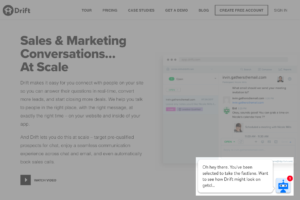
For a good example of B2C interactions, take a look at Levi’s Virtual Stylist. It quickly guides customers through a decision tree to narrow down the broad range of style options offered by Levi’s and adds a human element with a “see it styled” option, which shows customers how other folks have styled the suggested jeans.
In each of these cases, a bot does a masterful job of building customer relationships — as a bot!
Passing the Turing Test
Arri Bagah is the head of chatbots at BAMF media, a growth hacking agency for B2B businesses.
He agrees that chatbots can work well as a customer service tool “especially to help people make purchase decisions faster and more conveniently, answering questions on the fly so people don’t have to wait to get their answers.”
But he believes brands can also use these conversations to start building relationships.
He says, “You can use bots at the top of the funnel to teach, build the relationship, and sell.”
“One thing I’m doing on my own website is to ask visitors if I can walk them through a few strategies to help them reduce their Facebook ads cost. ‘Can I teach you about…[whatever it is]?’ You can put people through that sequence and, at the end, recommend a product that would help them move forward to the next steps. And people can ask questions. I’ve set it up to where the bot notifies me to answer specific questions live.”
Bagah works specifically with Facebook Messenger, but his advice can apply to any AI messaging app. When you start to think of messaging as a relationship-building, educational tool, whole new avenues of interaction open up.
But – according to Arri, it has to sound like a human being.
And there’s a trick to that.
“If you look at how people use messaging apps, they use images and gifs, not just text. That’s what you need to use with a chatbot to make it feel personal and engaging.”
He says he designs his clients’ Facebook chatbots to have personalities.
“They’re funny. They send you GIFs that make you smile. When you nail down that personality, you’ll see people asking ‘is this a person?’ I love those questions!”
According to Arri, when customers can’t tell whether a bot is AI or a human being, you’re getting it right – especially when the bot can pass warmed-up leads to a real sales agent.
Customer Expectations Will Make the Choice for You
If you intend to incorporate AI into your customer experience, you will need to make the decision of whether to disclose the robot nature of specific interactions or not. If you are not sure, it may be wise to gauge your customers’ sentiments around bot interactions, or deploy some testing with both methods and determine which is better suited to your company’s need.
Service is a good start, but blended AI can deliver so much more
It’s not just about quality of service – it’s about quality of data (qualitative data, that is). Website designers and optimizers have traditionally used click analytics to determine the performance of a website, landing page, or SaaS product engagement. But one of Forrester’s predictions for 2018 is that 25 percent of enterprises will supplement click analytics with conversational interfaces that deliver voice-of-customer data.
Conversational interfaces, bots, chats – whatever you want to call them – are treasure troves of voice-of-customer data that can tell you why something doesn’t work (click analytics just tell you something is wrong, and it’s up to you to figure out what). But troubleshooting is just the tip of the iceberg, because once you have a customer talking to you, you can ask them to tell you what they want, need, wish they had, and plain don’t like.
Forget about optimizing your CTA button – you can optimize your business for the best possible CX.
Of course, it’s not quite that simple, because you’ll have hundreds and thousands of conversations coming through.
When you’re working at scale, sifting through qualitative data to come up with business-changing insights is another challenge altogether. And this is where AI can really shine.
One example is InMoment’s CXInsight™ , AI-powered text and sentiment analysis tool that can categorize unstructured feedback based on what matters most to you. Millions of Wootric survey responses pre-train the algorithm to look for important themes, which can be further segmented by buyer persona, user group, sentiment, or even individual. Like the best examples of blended AI, the AI does the tedious, time consuming work of categorizing massive quantities of qualitative data, letting the humans spend their time digging into the insights and taking action.
Are you ready to power your CX with AI in 2018?
From customer service to warming up sales leads, from educating consumers to helping derive insights from massive amount of data, AI can do so much to improve customer experience.
But as Forrester predicts, “Having a successful AI-driven customer service or sales program will depend on the processes that support a blended AI approach.”
Our prediction is this: Companies that have the processes in place to support AI and understand what AI tools can accomplish – and their limitations – will be poised to grow exponentially in 2018.
Are you one of them?
Get insights from qualitative data. Learn more about InMoment CXInsight™.
